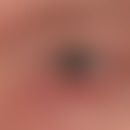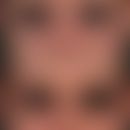Synonym(s)
HistoryThis section has been translated automatically.
DefinitionThis section has been translated automatically.
Frequent, chronic, initially recurrent, later persistent, inflammatory disease with centrofacial telangiectasia, persistent or flush-like onset of erythema triggered by temperature, sunlight, food or psychological (emotional stress), as well as prolonged inflammatory episodes with follicular or parafollicular papules and plaques, follicular papulopustules and pustules. In severe cases, the clinical picture is complicated by hyperplasia of the connective tissue and sebaceous glands (phymatosis) and eye involvement. A relapsing course of the disease is characteristic. The combination of subjectively disturbing symptoms (paraesthesia such as stinging, burning or even pain and itching) and the facial infestation, which is visible to everyone, contributes to negative effects on quality of life, anxiety, depression and stigmatization.
You might also be interested in
ClassificationThis section has been translated automatically.
The classic classification according to phenotypes, which can occur in isolation or in combination. Percentage distribution in larger collectives in brackets (Hoepfner A et al. 2020):
- Stage O: Functional (transient) erythema: Volatile, often paroxysmal livid facial erythema (flushing - rosacea diathesis) (1.1%)
- Stage I(rosacea erythematosa): Persistent erythema over hours and days. There is a risk of increasing formation of telangiectasias (rosacea teleangiectatica), which are mainly localized nasolabially and in the cheek area (22.5%).
- Stage II(rosacea papulopustulosa): Single or grouped, inflammatory, reddened papules that persist for days to weeks, possibly with fine lamellar scaling. Sterile or normal follicular flora containing papulopustules and pustules. Scarless healing of the individual relapses, accumulation of relapses in the course of the disease (68.4%).
- Stage III(phymatous or glandular-hyperplastic rosacea ): Glandular-hyperplastic form with large, inflammatory nodules and infiltrates, diffuse sebaceous gland hyperplasia (phymosis), especially on the nose (see rhinophyma below), but also on the cheeks, chin, forehead and ears. This stage of phymic formation occurs almost exclusively in men (8%).
- Special forms:
- Ocular rosacea (called ophthalmorosazea) is to be expected in 30% of rosacea collectives. Eye involvement: blepharitis, conjunctivitis, iritis, iridocyclitis, hypopyoniritis, keratitis with photophobia, pain, risk of blindness (6.9%).
- Lupoid rosacea (granulomatous rosacea) (1.4%)
- Rosacea conglobata (0.2%)
- Rosacea fulminans (especially in young women) (0.8%)
- Steroid rosacea (after prolonged steroid therapy) (5.4%)
- Pyoderma faciale
- Gram-negative rosacea (after prolonged treatment with topical or systemic antibiotics) (5.4%)
- Neurogenic rosacea
- Morbihan's disease (1.0%)
- Pediatric rosacea (0.8%)
- Localized phyma formation (in glandular-hyperplastic rosacea)
- Solid facial edema in rosacea (see M. Morbihan below). The connection is often disputed!
Current classification according to phenotypes: ROSCO (Global ROSacea COnsensus) with individualized treatment algorithms
Occurrence/EpidemiologyThis section has been translated automatically.
Reliable data on the epidemiology of rosacea has so far only been collected in very few and heterogeneous studies.
The prevalence figures vary from region to region. In a population of working people > 30 years of age, a prevalence of 22% was reported in an Estonian study. This would make rosacea the most common skin disease of all! In a German population of 90,880 workers, a prevalence of 2.3% was determined, in a Swedish study of 809 workers a prevalence of 10%. Compared to the Mediterranean population, rosacea occurs more frequently in the Celtic constitutional type (Reinholz 2016).
Gender distribution: The frequently cited gynaecotropy (69-76%) cannot be derived from all studies for classic rosacea. However, there is an unequal gender distribution in Morbihan's disease and phymatous rosacea (mainly men) in contrast to rosacea fulminans (almost exclusively women). There is also a significantly higher incidence of rosacea in patients with Nordic/Celtic skin types (Fitzpatrick I-II) (Lenders D et al. 2023).
Phymatous rosacea, fibrosis and glandular hyperplasia: Phymatous skin lesions occur almost exclusively in men and are a rarity in women. The pathophysiological processes that lead from chronic inflammation to fibrosis and glandular hyperplasia in some patients are still unclear. Mast cells and B lymphocytes probably play a central role in the development of fibrotic changes in rosacea, primarily via the release of cytokines, chemokines, proteases and growth factors. The average age of onset is 60.3 years.
Ocular rosacea: This complication is estimated to occur in between 3 and 58% of adults. Approximately 20-30% of rosacea patients initially show purely ocular involvement. The average age of onset is 54.0 years.
EtiopathogenesisThis section has been translated automatically.
The etiopathogenesis is not yet fully understood:
- Innate immunity: Genetic dispositions with abnormalities in innate immunity (these concern the antimicrobial peptide cathelicidin and its activator kallikrein 5) and accompanying vascular dysfunction are regarded as the most likely cause. The human cathelicidin LL-37, as the actual active cleavage product of cathelicidin, plays a central role in rosacea pathogenesis (BW Park et al. 2018). This peptide has both antimicrobial and immunomodulatory properties. The increased activities of the cathelicidin peptides and the increased protease activities lead to proinflammatory cathelicidin fragments, some of which are not found in healthy skin. They release the proinflammatory interleukin-8. Furthermore, it was found that cathelicidin fragments stimulate vascular growth by releasing VEGF (vascular endothelial growth factor) from keratinocytes.
- BTNL2 gene (butyrophilin-like 2): The BTNL2 gene (BTNL2 stands for Butyrophilin Like 2) is a protein-coding gene located on chromosome 6p21.32. The BTNL2 gene encodes a type I transmembrane protein associated with the major histocompatibility complex class II, which belongs to the family of butyrophilin-like B7 immunoregulators. It is thought to be involved in immune surveillance and acts as a negative T cell regulator by reducing T cell proliferation and cytokine release.
- Adaptive immune system: An activation of B and T cells can be assumed in the various forms of rosacea. Forms of rosacea can be assumed. The migration of pro-inflammatory T-cell lymphocytes (Th1/Th17) is already observed in an early form of rosacea. This leads to an upregulation of proinflammatory cytokines such as TNF-alpha, interleukin-17 and interferons. Macrophages and mast cells are also involved in the inflammatory tissue reaction. In rosacea papulopustulosa, IL-8 is overexpressed as well as the chemokines CXCL1, CXCL2 and CXCL6, which leads to the recruitment of neutrophilic leukocytes and angiogenesis .
- Role of microorganisms: Follicular Demodex mites are possible co-triggers of the inflammatory tissue reaction. The density of Demodex mites is increased in the skin of rosacea patients. Specific IgG antibodies against mite components can be detected. The success of systemic and local therapy approaches with antiscabiosa indicates the pathogenetic significance of mite colonization. An anti-inflammatory effect can also be achieved by reducing the colonization density of Demodex mites. It is known that a TH2 immune response plays a controlling role in Demodex colonization (note: drugs that target cytokines of the TH2 pathway, such as dupilumab, can lead to blepharoconjunctivitis due to Demodex colonization). The influence of Helicobacter pylori is controversially discussed.
- Neuroinflammation and vascular hyperreactivity: The vascular hyperreactivity of rosacea is manifested by both transient redness (flushing) and persistent redness, including the development of telangiectasia. A dysregulation of the neuroimmunological unit is held responsible for this (Steinhoff 2015). Trigger factors for flushing include UV rays, X-rays, heat, cold, excitement, coffee, alcohol, tea, hot spices (pepper, curry), temperature fluctuations, external (too oily) cosmetics, hormonal fluctuations (menstruation, pregnancy, menopause) and stress. It is possible that the activation of TRP channels (transient receptor potential channels) in rosacea is an explanation for this hypersensitivity. Among the 28 known TRP channels is the capsaicin receptor (TRPV1), which is activated by heat, alcohol and spicy food. TRPA1 (TRP ankyrin receptor 1), on the other hand, reacts to cold, formalin and other chemicals. Following activation of the TRP receptors, both substance P and CGRP (calcitonin gene-related peptide) are released, which mediate both neurogenic inflammation and pain. Substance P promotes the development of edema through mast cell degranulation and activation of the NK-1 receptor on postcapillary venules. Mast cell degranulation in turn induces the release of further proinflammatory cytokines and chemokines (e.g. CXCL-8, TNF and interleukin-3). CGRP leads to arteriolar dilation and influences the lymphatic vessels. Vasodilation is also mediated by the vasoactive intestinal peptide (VIP), which is found in higher concentrations in cutaneous blood vessels and serum in people with rosacea. One of the strongest known vasodilators is also found in increased quantities in rosacea patients; this is the neuropeptide PACAP (Pituitary Adenylate Cyclase-Activating Polypeptide) (Lenders D et al. 2023). Furthermore, rosacea can contribute to the development of cardiovascular diseases, as its inflammatory properties cause endothelial dysfunction, a first step towards atherosclerosis.
Serotonin/histamine receptors: The importance of upregulated serotonin(HTR3a) and histamine receptors (HRH2 and HRH3) in patients with rosacea is still unclear (Lenders D et al. 2023)
- Biologics-induced rosacea: Rosacea-like skin changes are detected in 30-40% (!) of oncology patients treated with EGFR receptor inhibitors, e.g. cetuximab, erlotinib, panitunumab and gefitinib. Tyrosine kinase inhibitors such as imatinib and nilotinib can also cause rosacea-like changes.
- Gluten sensitivity/diabetes mellitus and rosacea: A case-control study (Egeberg A et al. 2016/2017) of 6759 rosacea patients found significantly increased rates of type 1 diabetes mellitus and gluten intolerance/coeliac disease, particularly in women. These results indicate a link between gluten intolerance and rosacea and suggest that implementing a GFD (gluten-free diet) could provide relief for rosacea patients.
ManifestationThis section has been translated automatically.
Occurs mainly in the 4th and 5th decade of life. Around 80% of patients are >30 years old. The average age in larger collectives was between 35.9 years (Yang F et al. 2023) and 49.3 years (Hoepfner A et al. 2020). Patients with perioral dermatitis are on average 10 years younger.
Women typically develop rosacea from the age of 35 with a peak incidence around the age of 61-65.
Rosacea is more severe in men than in women. In particular, stage III rosacea (phymatous rosacea) is rarely seen in women. Men show the highest prevalence around the age of 76-80.
Complicated pyoderma faciale is observed almost exclusively in younger women.
Rarely, children can be affected by rosacea, in which case the children often suffer additionally or exclusively from ocular rosacea.
LocalizationThis section has been translated automatically.
HistologyThis section has been translated automatically.
DiagnosisThis section has been translated automatically.
80% of rosacea cases are diagnosed at the age of 30 or older. In women, the average age is 35, with the prevalence of the disease being highest between the ages of 61 and 65.
Differential diagnosisThis section has been translated automatically.
Stage I (rosacea erythematosa):
- Constitutional facial erythema(erythema perstans faciei): persistent erythema, not alternating, no flushing symptoms.
- Chronic frost damage: extensive erythema, actinic damage, no history of flushing.
Circulatory disturbances of various kinds. Circulatory disorders of various kinds (hypertension, mitral valve); known internal problems; blue-red facial color; no flushing symptoms.
Menopausal induced hot flushes and facial redness (no other evidence of rosacea, sweating attacks all over the body).
- Scarlet fever: Acute course; severe symptoms; such symptoms are completely absent in R.
- Erysipelas: Acute course; fever, painfulness, painful lymphadenopathy
- Flushing phenomena(carcinoid syndrome, medication erythema e pudore): Seizure-like erythema, no triggers as in rosacea (here e.g. alcohol)
Lupus erythematosus, systemic: butterfly erythema, sometimes comparable; severe symptoms (patient appears ill!).
- Dermatomyositis: extensive heliotropic erythema; purple; severe symptoms (patient appears ill!); conspicuous muscle weakness.
- Long-term pre-treatment with glucocorticoid ointments(see also steroid skin): Mostly flat, blurred erythema, often also pustules, considerable feeling of tension (patient suffers!). P
- Polycythaemia vera: No variable but persistent redness; color rather blue-red.
- Seborrhoeic eczema: scaly redness in the centrofacial area, usually also discrete fine lamellar scaling of the head. Frequent infestation of other seb. Zones (e.g. sternal area):
- Photodermatoses(actinic reticuloid; chronic actinic dermatitis).
Stage II (rosacea papulosa/pustulosa):
- Acne vulgaris
- Acneiform exanthema
- Dermatitis perioralis
- Lupus miliaris disseminatus faciei
- Steroid skin
- Folliculitis, gram-negative
- Tinea faciei
- Demodicosis.
Stage III (skin changes are diagnostic):
Complication(s)(associated diseasesThis section has been translated automatically.
A connection between rosacea and migraine has been proven. In a larger Danish study 12.1% of rosacea patients (16% of women, 4% of men) suffered from migraine (in the total population it was only 7.3% (Egeberg A et al. 2017).
Other neurological diseases are also more common in rosacea: Parkinson's disease, multiple sclerosis, Alzheimer's disease.
General therapyThis section has been translated automatically.
Skin care: The skin of rosacea patients is particularly sensitive to chemical and physical irritants. Irritating applications such as highly irritating soaps, syndets, alcoholic tinctures. Astringents and peeling agents should be avoided.
Sunlight: Sunlight often aggravates the disease. Sunscreens are recommended. In contrast to the widely used chemical sunscreens, physical light protection filters are recommended, which contain highly comminuted, 20-50 nm particles of zinc oxide and/or titanium oxide and do not sting the skin or eyes (e.g. Micro sun 20, Eucerin Sun). Alternatively, use broad-spectrum sun protection creams with SPF > 15, if possible with protection against UVB and UVA as well as infrared (e.g. Anthelios).
Rehabilitation as part of a measure to ensure earning capacity (especially for customer contact, etc.). If necessary, dietary advice or in the case of psychological involvement: Behavioral medicine-oriented rehabilitation (VOR).
Facial massage: Massage treatments according to Sobye are rarely carried out nowadays, with circular movements over the nose, cheeks and forehead in the morning and evening.
External therapyThis section has been translated automatically.
S. Table
Brimonidine: Brimonidine satrate (preparation: Mirvaso®) is approved for the treatment of erythematous rosacea. In clinical studies, 0.3% brimonidine gel achieved significantly greater improvements in facial redness in rosacea than placebo. The most common side effects (incidence ≥ 1%) during short-term treatment were flushing, erythema, burning of the skin and contact dermatitis. The good clinical and lasting effect was confirmed in a long-term open study over 12 months (Moore A et al 2014). The preparation can be combined with anti-inflammatory rosacea therapeutics.
Alternative: Ivermectin (1% ivermectin cream) is an alternative to permethrin and metronidazole formulations. A 1% ivermectin cream (Soolantra®) is approved. The good tolerability and efficacy has been proven in a long-term study over 52 weeks (Taieb A et al. 2016).
Alternative: Metronidazole has been a cornerstone of rosacea therapy (papulo-pustular rosacea) for >30 years. It is available both as a magistral formulation and in numerous ready-to-use preparations (gel, cream, lotion, e.g. Metrogel®). An antioxidant and anti-inflammatory effect is assumed.
Supplementary: To cover reddened skin areas (with simultaneous light protection), a tinted concealer paste is recommended as described in the NRF in several tint levels (NRF 11.59.).
Topical off-label therapy:
- Permethrin: If rosacea superimposed by Demodex folliculorum is suspected, a therapy (lasting several months) with antiscabiosa such as low-dose permethrin (1-2% in Ung. emulsific. aquos) is recommended.
- Alternative: Benzyl benzoate: If rosacea superimposed by Demodex folliculorum is suspected, benzyl benzoate (10-20% in commercially available preparations) may be a well-tolerated alternative.
- Alternative: Topical retinoids (especially adapalene 0.1%) are considered an alternative to metronidazole for chronic use. The efficacy in inflammatory rosacea is rated as better than a 0.75% metronidazole gel (e.g. Metrogel®)
- Alternative: The clinical results of the calcineurin inhibitors tacrolimus and pimecrolimus are evaluated with different results in inflammatory rosacea. They cannot be regarded as the first choice.
- Alternative treatment for erythema: lesional botulinum toxin injections (off-label use). There are positive effects in smaller collectives (Park KY et al. 2015).
- Alternative treatment of erythema in mild to moderate rosacea: 1% oxymetazoline cream, a specific alpha1A adrenoreceptor agonist.
Internal therapyThis section has been translated automatically.
Antibiotics: Excellent response to oral antibiotics, especially in papulopustular forms. In addition, functional erythema is reduced. Since patients are often very good at assessing disease activity themselves, patient suggestions should be taken into account in dosing.
- Tetracyclines: Antibiotics are usually administered over several weeks with tetracyclines p.o. (e.g., Tetracyclin-Wolff Kps.) 500-1000 mg/day distributed over 1-2 EDs; if clinical findings improve, reduction to 500-250 mg/day.
- Alternative: Equally effective are minocycline (e.g. Klinomycin, Mino-Wolff) 100 mg/day p.o., reduction after clinic to 50 mg/day or doxycycline in a dosage of initially 100mg/day after 14 days of 50mg/day.
- Alternative: Doxycycline in non-antibiotic concentration: In papulo-pustular rosacea, oral doxycycline in "subantimicrobial" low dosage 40mg/day p.o. (preparation Oraycea®) is equally effective as in conventional therapy with 100 mg/day p.o..
Notice. Minocycline has less phototoxic effect than other tetracyclines!
- Alternative: Macrolide antibiotics: In case of intolerance or lack of success, erythromycin (e.g. Erythro Hefa 500) 2-3 times/day 500 mg as well as other macrolide antibiotics like roxithromycin (e.g. Rulid) 2 times/day 150 mg: clarithromycin (e.g. Klacid) initially 2 times/day 250 mg, later 250mg 1 time/day or azithromycin can be used.
- Alternative: Rifaximin, a broad-spectrum bactericidal oral antibiotic, is a semisynthetic derivative of rifamycin. Rifaximin is virtually unabsorbed (< 1%) and thus is effective exclusively in the intestinal lumen. Dosage: 3x400mg/day for 10 days (Weinstock LB et al 2013).
- Alternative(off-label): Isotretinoin (e.g. acnenormin): Monotherapy with isotretinoin is indicated for severe and refractory forms of rosacea that do not respond or respond inadequately to antibiotic therapy, such as lupoid rosacea, stage III rosacea, rosacea conglobata, gram-negative rosacea, and rosacea fulminans. The standard dose is 0.3 mg/kg bw/day; in milder forms of rosacea, 0.1-0.2 mg/kg bw/day is sufficient. These doses are also used in ophthalmorosazea. In mild to moderate forms of rosacea, good results can be achieved with daily doses as low as 2.0-2.5 mg (!). Duration of therapy: several months/years. The therapy is. Cave. Isotretinoin systemic therapy is not approved in women of childbearing age. Civil law and, if necessary, also criminal law responsibility therefore lie expressly with the treating physician! For women of childbearing age, contraceptive measures are therefore absolutely necessary! Pregnancy test before beginning therapy, safe contraception one month before beginning therapy, during the entire course of therapy and one month after the end of therapy.
Note: No combination with tetracyclines, as there is a risk of increased intracranial pressure and pseudotumor cerebri!
- Alternative for complicated forms: Glucocorticoid/isotretinoin combinations: In selected severe forms such as rosacea fulminans, it may be necessary to combine isotretinoin (dosage see above) with glucocorticoids for a short time. Dosage: 20-40 mg prednisolone equivalent/day for 1-2 weeks, then taper rapidly to shorten the course of the disease. Treatment with isotretinoin is continued until all inflammatory changes have healed.
- Alternative antiandrogen/isotretinoin combinations: In women, isotretinoin therapy can be combined with antiandrogen agents. In addition to isotretinoin, cyproterone acetate and ethinyl estradiol can be given in combination, e.g., Diane 35 (2 mg cyproterone acetate and 35 μg ethinyl estradiol) 1 drg./day on the 1st to 21st day of the cycle, then 7 days off, then 1 drg./day again for 21 days, then 7 days off again, etc.
Notice. In case of therapy-resistant rosacea-like skin changes, demodicosis should be considered, see below. Demodicosis (see also: external therapy with 1% ivermectin cream).
- Alternatively, carvedilol: Patients with limiting flushing symptoms: Carvedilol ( a non-selective- beta blocker leads in a dosage of 2x 6,25mg/day p.o. to an improvement of the erythema tendency. The therapy is designed as a continuous therapy (1-3x 6,25mg/day p.o.) possibly in combination with doxycycline. Control of blood pressure and pulse rate is necessary (preparations: Dilatrend®, Dimetil®).
Reminder. In refractory rosacea erythema, paroxetine has been successfully used (Wang B et al. 2023/Paroxetine is a selective serotonin reuptake inhibitor (SSRI) and approved in Germany for the following indications: depressive disorders, generalized anxiety disorder, panic disorder with or without agoraphobia, social phobia, posttraumatic stress disorder as well as obsessive-compulsive disorder) (dosage 25mg/day p.os.). Caution: the wide spectrum of side effects is to be considered with this substance!
ProphylaxisThis section has been translated automatically.
The following measures are recommended for prophylaxis:
- cleanse skin gently, e.g. with lukewarm water and dry dabbing
- use light/hydrophilic skin care products
Not recommended are:
- do not use strong rubbing, peelings and blood circulation-enhancing or astringent substances
NaturopathyThis section has been translated automatically.
Order therapy, see section on diet/lifestyle habits.
The active ingredient complex rutoside (rutin), nicotiflorin and epicatechin has an anti-inflammatory effect (IL-1 inhibition) as a phytoextract in rosacea and inhibits the angiogenesis factor VEGF.
TablesThis section has been translated automatically.
Stage-dependent external and internal therapy of rosacea
Ammonium bituminosulfonate pastes |
Azelaic acid |
Metronidazole |
Other antibiotics |
Isotretinoin |
Laser |
|||
External |
External |
External |
External |
Internal |
External |
Internal |
||
Stage I (rosacea erythematosa) | ||||||||
Persistent erythema |
++ |
+++ |
+++ |
- |
+ |
- |
- |
- |
Teleangiectasia |
- |
- |
- |
- |
- |
- |
- |
+++ |
Stage II (rosacea papulosa/pustulosa) | ||||||||
Persistent erythema |
++ |
+++ |
+++ |
+ |
++ |
- |
- |
- |
Teleangiectasia |
- |
- |
- |
- |
- |
- |
- |
+++ |
Papules, pustules |
+++ |
+++ |
+++ |
+ |
+++ |
(+) |
+ |
- |
Edema |
++ |
+++ |
++ |
- |
+ |
- |
+ |
- |
Stage III | ||||||||
Persistent erythema |
++ |
+++ |
+++ |
- |
++ |
- |
+ |
+ |
Teleangiectasia |
- |
- |
- |
- |
- |
- |
- |
+++ |
papules, pustules, knots |
+++ |
+++ |
+++ |
+ |
+++ |
(+) |
+++ |
- |
Edema |
++ |
++ |
++ |
- |
+ |
- |
++ |
- |
hyperplasia of sebaceous glands and connective tissue |
++ |
- |
- |
+ |
++ |
++ |
+++ |
- |
Diet/life habitsThis section has been translated automatically.
There is no specific rosacea diet. However, erythema-inducing factors such as hot drinks, spicy foods and alcohol should be avoided. Each patient should find out for themselves which foods are tolerated and which are not.
A diet with a high proportion of natural plant foods reduces the risk of rosacea, while highly processed products increase the risk of rosacea (Zhang Y et al. 2025). Nuts and legumes reduce the risk of rosacea, high meat consumption increases it by up to 90%.
Mouth, nose and face masks can lead to a worsening of rosacea - early treatment is indicated here depending on the clinical picture, as is regular changing of masks.
Note(s)This section has been translated automatically.
In an epidemiological study it was shown that women with rosacea have a significantly increased risk of thyroid cancer (60%), bronchial cancer and basal cell carcinoma (50%). (Li WQ et al. 2015; Egeberg A et al. 2017)
LiteratureThis section has been translated automatically.
- Abram K et al. (2010) Prevalence of rosacea in an Estonian working population using a standard classification. Acta Derm Venereol 90:269-273
- BW Park et al. (2018) A Study on Vitamin D and Cathelicidin Status in Patients with Rosacea: Serum
- Level and Tissue Expression. Ann Dermatol 30:136-142.
- Caf N et al. (2023) Evaluation of subclinical atherosclerosis in rosacea patients by flow-mediated dilatation method. J Cosmet Dermatol 22:1001-1010.
- Chu CY (2005) The use of 1% pimecrolimus cream for the treatment of steroid-induced rosacea. Br J Dermatol 152: 396-399
- de Bersaques J (1995) Historical Notes on Rosacea. European Journal of Dermatology 5: 16-22
- Egeberg A et al. (2016) Clustering of autoimmune diseases in patients with rosacea. J Am Acad Dermatol 74:667-72.
- Egeberg A et al. (2017) Prevalence and risk of migraine in patients with rosacea: A population-basedcohort study.J Am Acad Dermatol 76:454-458.
- Egeberg A et al.(2017) Rosacea and risk of cancer in Denmark. Cancer Epidemiol 47:76-80.
- Egeberg A et al. (2017) Rosacea and gastrointestinal disorders: a population-based cohort study. Br J Dermatol 176:100-106.
- Elewski BE et al. (2003) A comparison of 15% azelaic acid gel and 0.75% metronidazole gel in the topical treatment of papular rosacea. Arch Dermatol 139: 1444-14450
- Gonsoer LI et al. (2016) Pathogenesis, clinical features and current therapy of rosacea. Dermatologist 67: 69-84
- Gravina A et al. (2015) Helicobacter pylori infection but not small intestinal bacterial overgrowth may play a pathogenic role in rosacea. United European Gastroenterol J 3:17-24.
- Gregory A et al. (1994) A Comparison of the efficacy of topical tretinoin and low-dose oral isotretinoin in rosacea. Arch Dermatol 130: 319-324
- Hoepfner A et al. (2020) Rosacea and perioral dermatitis: A monocentric, retrospective analysis of the clinical presentation of 1032 patients. JDDG 18: 561-570
- Hsu CC et al. (2012) Pronounced facial flushing and persistent erythema of rosacea effectively treated by carvedilol, a nonselective β-adrenergic blocker. J Am Acad Dermatol 67:491-493.
- Jappe U, Schnuch A, Uter W (2005) Rosacea and contact allergy to cosmetics and topical medicaments - retrospective analysis of multicentre surveillance data 1995-2002. Contact Dermatitis 52: 96-101
- Lenders D et al. (w2023) Rosacea (Part 1, Etiology, Classification, Diagnostics): New aspects in diagnostics, classification and therapy. Dtsch Arztebl 120(27-28): DOI: 10.3238/PersDerma.2023.07.10.01
- Li WQ et al. (2015) Personal history of rosacea and risk of incident cancer among women in the US. Br J Cancer 113:520-523.
- Moore A et al. (2014) Long-term safety and efficacy of once-daily topical brimonidine tartrate gel 0.5%for the treatment of moderate to severe facial erythema of rosacea: results of a 1-year open-label study. J Drugs Dermatol 13:56-61.
- Park KY et al. (2015) Botulinum toxin for the treatment of refractory erythema and fl ushing of rosacea. Dermatology 230:299-301.
- Powell FC (2005) Clinical practice. Rosacea. N Engl J Med 352: 793-803
- Rebora A (2002) The management of rosacea. Am J Clin Dermatol 3: 489-496
- Reinholz M et al. (2016) Pathogenesis and clinic of rosacea as the key to symptom-oriented therapy. J Dtsch Dermatol Ges 14 Suppl 6:4-16.
- Schaller M et al. (2016) Rosacea management: update on general measures and topical therapy options.J Dtsch Dermatol Ges 14 Suppl 6:17-28.
- Schöfer H (2013) Topical therapy of rosacea. Dermatologist 64: 494-499
- Steinhoff M et al.(2016) Facial Erythema of Rosacea - Aetiology, Different Pathophysiologies and Treatment Options. Acta Derm Venereol 96:579-586.
- Taieb A et al. (2016) Maintenance of remission following successful treatment of papulopustular rosacea with ivermectin 1% cream vs. metronidazole 0.75% cream: 36-week extension of the ATTRACT randomized study.J Eur Acad Dermatol Venereol 30:829-36.
- Taub AF (2003) Treatment of rosacea with intense pulsed light. J Drugs Dermatol 2: 254-259
- Veien NK (1985) Topical metronidazole in the treatment of rosacea. Cutis 38: 209-210
- Wang B et al. (2023) Paroxetine is an effective treatment for refractory erythema of rosacea: Primary results from the Prospective Rosacea Refractory Erythema Randomized Clinical Trial. J Am Acad Dermatol 88:1300-1307.
- Weinstock LB (2013) Rosacea in Crohn's Disease: Effect of Rifaximin. J Clin Gastroenterol 45:295-296.
- Wilkin JK (1994) Rosacea. Pathophysiology and treatment. Arch Dermatol 130: 359-362
- Yang F et al. (2023) Differences in clinical characteristics of rosacea across age groups: A retrospective study of 840 female patients. J Cosmet Dermatol 22:949-957.
- Zhang Y et al. (2025) Healthy plant-based dietary pattern is associated with a lower risk of rosacea. J Eur Acad Dermatol Venereol; https://doi.org/10.1111/jdv.70163
Incoming links (67)
Acne rosacea; Acne rosacea; Adipokine; Alcohol skin changes; Alumina; Ammonium bituminosulfonate, light; Angiosarcoma of the head and face skin; antimicrobial peptides ; Azelaic acid; Bitter substances; ... Show allOutgoing links (105)
Acne (overview); Actinic reticuloid; Adapalen; Angiogenesis; Basal cell carcinoma (overview); Bateman, thomas; Benzyl benzoate; Botulinum toxin a; Brimonidine; BTNL2 gene; ... Show allDisclaimer
Please ask your physician for a reliable diagnosis. This website is only meant as a reference.



























